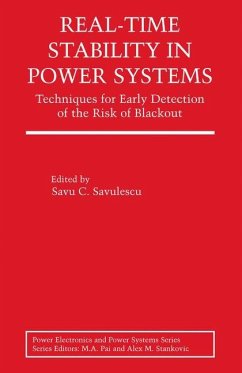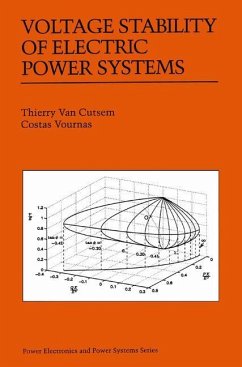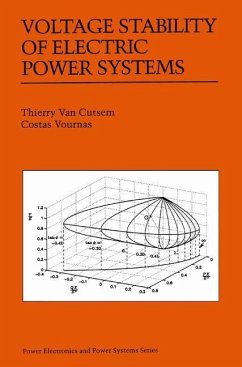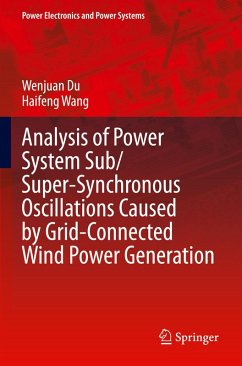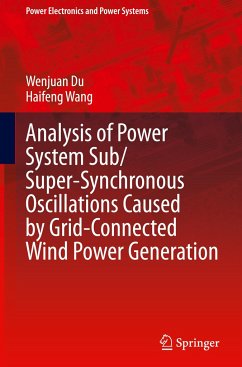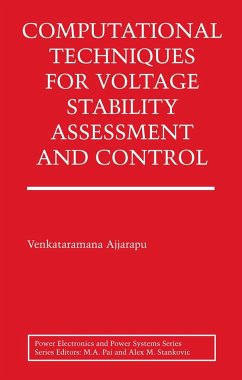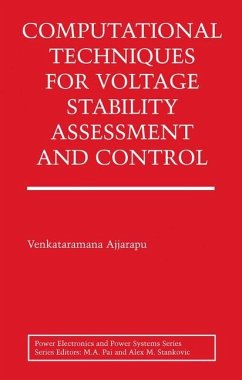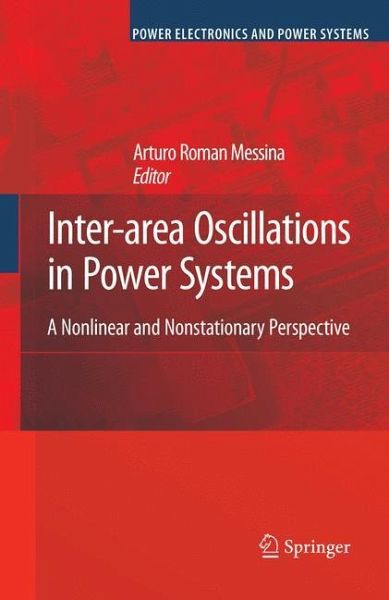
Inter-area Oscillations in Power Systems
A Nonlinear and Nonstationary Perspective
Herausgegeben: Messina, Arturo Roman
Versandkostenfrei!
Versandfertig in 6-10 Tagen
113,99 €
inkl. MwSt.

PAYBACK Punkte
57 °P sammeln!
This book deals with the application of new techniques based on time-frequency system representations and statistical approaches to the study, characterization, and control of nonlinear and non-stationary inter-area oscillations in power systems. The main focus is on the study of nonlinear, time-varying wide-area oscillatory problems associated with critical system perturbations. Techniques that explicitly address and treat nonlinearity are given and efficient methods to generate time-varying system approximations from both measured and simulated data are discussed. The theoretical basis for these methods is described as well as application properties and performance.
Analysis techniques discussed include parametric methods such as Prony analysis, Yule-Walker based methods, Least-Squares methods, Wavelets and Fourier-based methods, and non-parametric methods such as Periodogram averaging and the Hilbert-Huang transform, as well as higher order statistical approaches.
Emphasis is placed on the modeling and control of complex time-varying behavior which has not been present in previous work. Through case studies of synthetic and real-life test systems, the authors explain how an understanding of temporal, nonlinear behavior can be incorporated in the analysis and design process of complex control systems.
Examples include computer simulations and actual system measurements from power systems in North America, Australia, India and Mexico. Particular attention is given to the vital new ideas of dynamic security assessment in real-time implementations and the evaluation of spatio-temporal behavior in systems with embedded f Flexible ac Transmission Systems (FACTS). Future applications of these methodologies focusing on the implementation of smart wide-area monitoring, protection control systems based on methods of analysis of time series are also discussed.
Analysis techniques discussed include parametric methods such as Prony analysis, Yule-Walker based methods, Least-Squares methods, Wavelets and Fourier-based methods, and non-parametric methods such as Periodogram averaging and the Hilbert-Huang transform, as well as higher order statistical approaches.
Emphasis is placed on the modeling and control of complex time-varying behavior which has not been present in previous work. Through case studies of synthetic and real-life test systems, the authors explain how an understanding of temporal, nonlinear behavior can be incorporated in the analysis and design process of complex control systems.
Examples include computer simulations and actual system measurements from power systems in North America, Australia, India and Mexico. Particular attention is given to the vital new ideas of dynamic security assessment in real-time implementations and the evaluation of spatio-temporal behavior in systems with embedded f Flexible ac Transmission Systems (FACTS). Future applications of these methodologies focusing on the implementation of smart wide-area monitoring, protection control systems based on methods of analysis of time series are also discussed.
The study of complex dynamic processes governed by nonlinear and nonstationary characteristics is a problem of great importance in the analysis and control of power system oscillatory behavior. Power system dynamic processes are highly random, nonlinear to some extent, and intrinsically nonstationary even over short time intervals as in the case of severe transient oscillations in which switching events and control actions interact in a complex manner. Phenomena observed in power system oscillatory dynamics are diverse and complex. Measured ambient data are known to exhibit noisy, nonstationary fluctuations resulting primarily from small magnitude, random changes in load, driven by low-scale motions or nonlinear trends originating from slow control actions or changes in operating conditions. Forced oscillations resulting from major cascading events, on the other hand, may contain motions with a broad range of scales and can be highly nonlinear and time-varying. Prediction of temporal dynamics, with the ultimate application to real-time system monitoring, protection and control, remains a major research challenge due to the complexity of the driving dynamic and control processes operating on various temporal scales that can become dynamically involved. An understanding of system dynamics is critical for reliable inference of the underlying mechanisms in the observed oscillations and is needed for the development of effective wide-area measurement and control systems, and for improved operational reliability.





